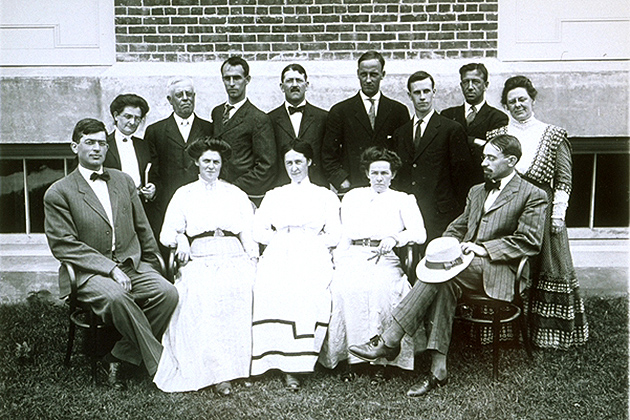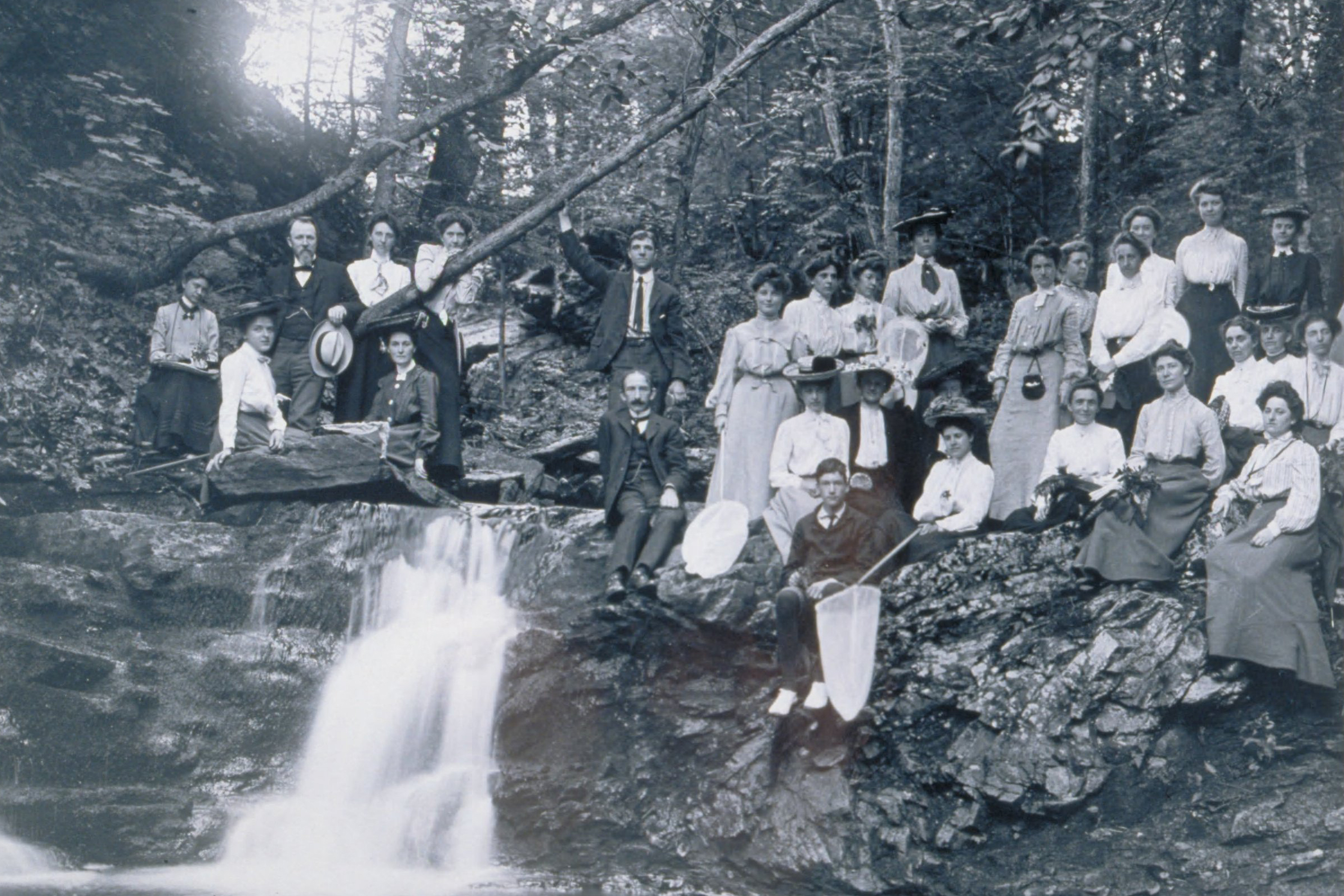UConn’s Summer Session is becoming increasingly popular, as an opportunity for students to get ahead, catch up, or make room in their schedules for internships or jobs. One in five current UConn undergraduates is taking at least one course this summer, a jump of 62 percent over 2008.
But taking classes at UConn during the summer is nothing new.
Summer courses have been offered at the University continuously since 1937, but the history of classes offered during the interval between academic years goes back to 1901 and Rufus W. Stimson, president of what was then known as Connecticut Agricultural College.
Even before that, from its first academic year in 1881-1882, the Storrs Agricultural School offered a “summer term” of what was until 1914 a trimester calendar. The fall term ran from late September up to the Christmas holiday break, the winter term from January through March, and the “summer” term from April through June, ending just before Commencement, which until the early 1970s was always held in mid-June.

A real summer school came in the early 20th century, just as Stimson was beginning his tenure (1901-1908) as president of Connecticut Agricultural College.
With bachelor’s and master’s degrees from Harvard, and after he graduated from Yale Divinity School, Stimson came to Storrs in fall 1897, joining the faculty to teach English language and literature.
His relatively brief term as president began after the even briefer but stormy tenure of George Flint. The Flint administration had suffered “The War of the Rebellion,” so called because the faculty rebelled against Flint’s effort to turn the small agricultural college toward classical education.
Flint, who was forced to resign, lost the battle but won the war. The little college would continue to see its curriculum expand beyond agriculture.
According to Walter Stemmons, university editor from 1919 to 1954, Stimson “was young, full of energy, and ambitious for the growth of the institution.

“He early undertook the building up of the summer school, which had made a feeble start in the summer of 1901 and which, under the name of ‘Agriculture and Nature Study,’ was to achieve considerable popularity and to provide much favorable advertising for the college among the schools of the State, from the teachers of which the summer school was largely recruited.”
Stemmons says the Codfish Falls in Mansfield “was a popular spot for the studying of nature.”
He quotes some interesting details from the prospectus of the summer school, July 8 to Aug. 5, 1902: “Bicycles may sometimes be used to advantage. Stout boots and strong skirts, trousers, and jackets will be found most serviceable. Drive out to the College from Willimantic. The livery stable charge for one person is $1.50.”
Thirty-seven students were registered in the summer of 1902 for a course called “Nature and Country Life.” The summer school of 1903 had 61 registered students.
For several years, the summer school was directed by a young faculty member, Albert F. Blakeslee, who arrived at Connecticut Agricultural College in 1907 to teach courses in agriculture. He was to become known as a leading figure in the genetics world in the decades before and after World War I.
In 1914, the summer school was suspended. The following year, it was replaced by a new summer program run by the state Board of Education.
The summer program started in 1915 was, according to the terminology of the time, “a normal training school” for Connecticut school teachers.
That first session was attended by 396 teachers and school superintendents, but it “so overtaxed the dining hall and dormitory accommodations that attendance the following summer was limited to 183,” wrote Stemmons.
The summer teacher training was short-lived, however, canceled in 1918 owing to World War I, and not revived.
For nearly 20 years, no summer courses were offered at the college. Then, on Dec. 16, 1936, trustees approved a proposal from Albert Jorgensen, who had just completed his first year as president of what was then known as Connecticut State College.
A flyer describing the new six-week summer program says that entering freshmen could get a jump-start on their college career by taking courses during the summer after their high school graduation, earning as much as six course credits.
P. Roy Brammell was named acting director of the program for 1937. The first summer’s faculty list includes a who’s who of familiar campus names: Albert Waugh, later dean of liberal arts and sciences and University provost; G. Safford Torrey, University marshal and professor of biology; Andre Schenker, professor of history; and Mildred French, dean of women from 1928 to 1953, who taught home economics.
Fast forward to 2016. UConn Summer Session now offers more than 600 course options with a total of about 5,800 students taking at least one course, and courses available at every campus. And, beyond the wildest imaginings of President Stimson and Professor Blakeslee in the early 1900s, online courses are not only available but are rapidly growing in popularity. In 2008, 35 courses were offered online; this summer, there are 195, and 40 percent of this summer’s total enrollment is in online courses.
Adapted from an article in the UConn Advance newspaper dated June 12, 2000.



